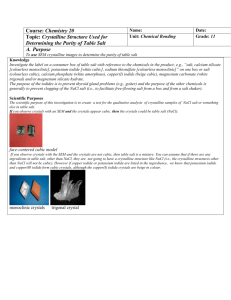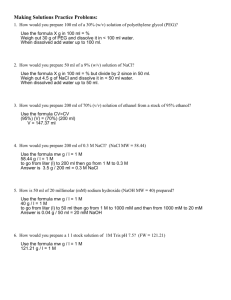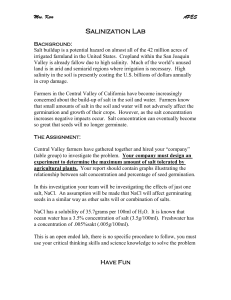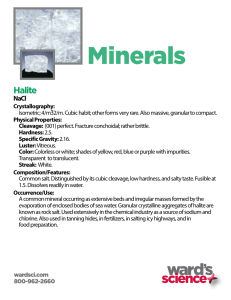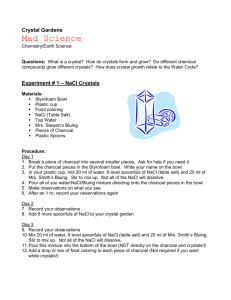Course: Chemistry 20
advertisement
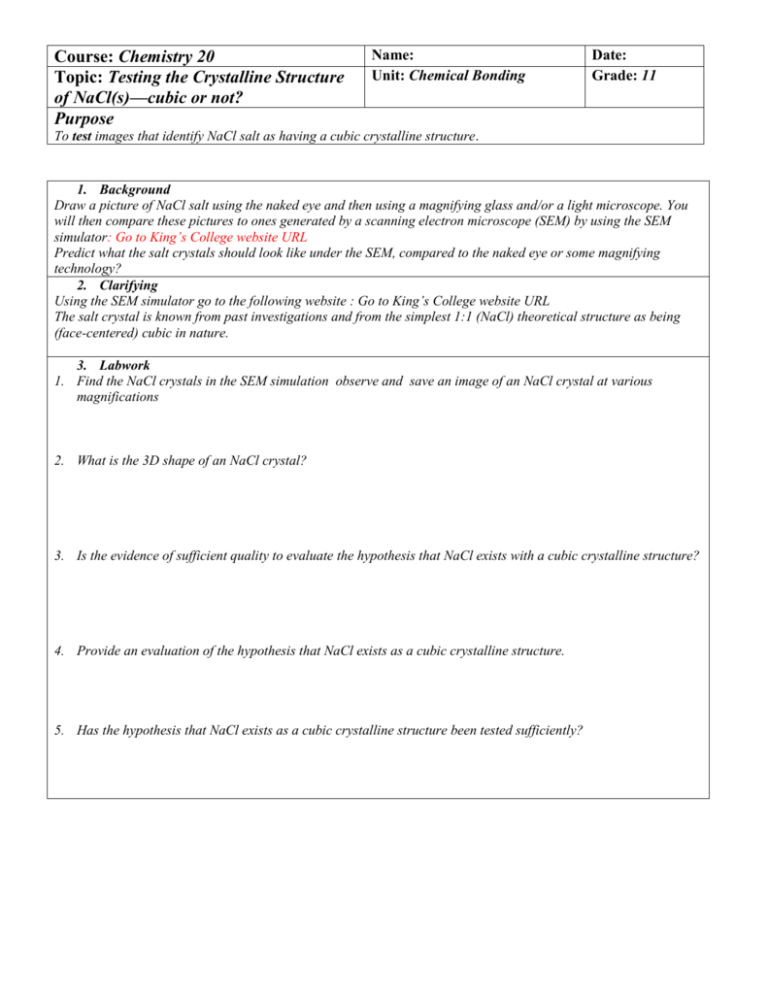
Course: Chemistry 20 Topic: Testing the Crystalline Structure of NaCl(s)—cubic or not? Purpose Name: Unit: Chemical Bonding Date: Grade: 11 To test images that identify NaCl salt as having a cubic crystalline structure. 1. Background Draw a picture of NaCl salt using the naked eye and then using a magnifying glass and/or a light microscope. You will then compare these pictures to ones generated by a scanning electron microscope (SEM) by using the SEM simulator: Go to King’s College website URL Predict what the salt crystals should look like under the SEM, compared to the naked eye or some magnifying technology? 2. Clarifying Using the SEM simulator go to the following website : Go to King’s College website URL The salt crystal is known from past investigations and from the simplest 1:1 (NaCl) theoretical structure as being (face-centered) cubic in nature. 3. Labwork 1. Find the NaCl crystals in the SEM simulation observe and save an image of an NaCl crystal at various magnifications 2. What is the 3D shape of an NaCl crystal? 3. Is the evidence of sufficient quality to evaluate the hypothesis that NaCl exists with a cubic crystalline structure? 4. Provide an evaluation of the hypothesis that NaCl exists as a cubic crystalline structure. 5. Has the hypothesis that NaCl exists as a cubic crystalline structure been tested sufficiently? 4. Summary a. Was the SEM needed to view the crystals? b. Could a magnifying glass or a laboratory microscope have been just as effective? c. What other tests might have been more economic? more time-efficient? less technologically dependent? more environmentally friendly? less collaborative? less fun? 5. Homework a. In the internal crystalline structure of NaCl salt, is the cubic structure face-centered or body centered or some other 1:1 configuration? b. Can we just say that the crystalline structure of salt is cubic or do we have to specify sodium chloride? c. Can we use table salt as a substitute for pure sodium chloride; i.e., is table salt a pure substance? d. How do we know the internal crystalline structure of NaCl salt? e. What is the origin of this knowledge? f. What kind of evidence is used to determine the internal crystalline structure? g. What kind of knowledge is gathered from the SEM—empirical or theoretical? What kind of knowledge is used to portray the internal crystalline structure of the salt crystal—empirical or theoretical?

